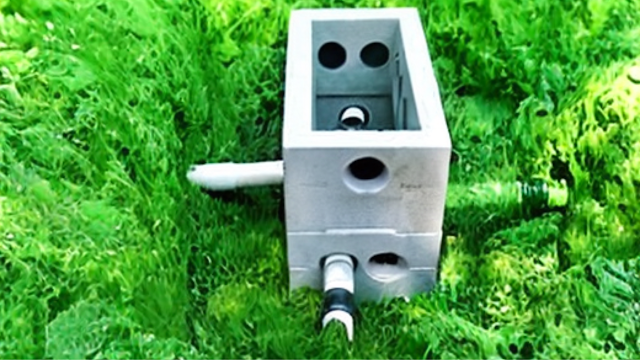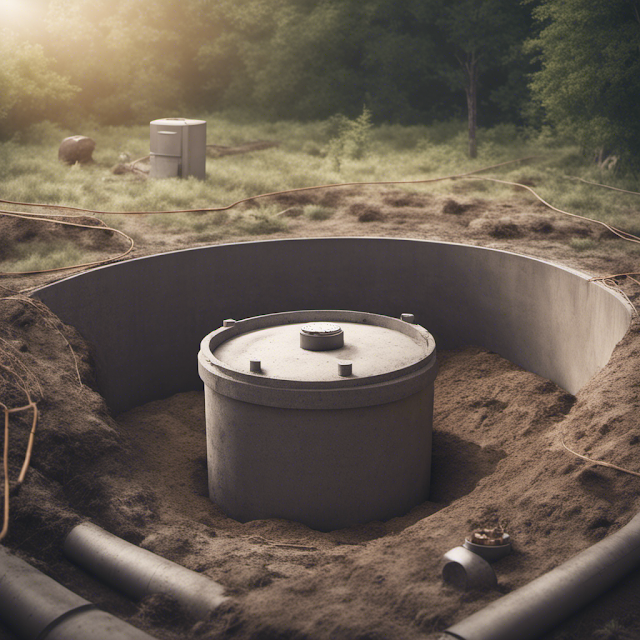Is Your Septic System Full? 3 Warning Signs To Watch Out For!
 |
| Is Your Septic System Full? 3 Warning Signs To Watch Out For! |
Maintaining a properly functioning septic system is of utmost importance for homeowners to ensure the efficiency and longevity of their system. However, determining when a septic tank is full and in need of pumping can be a challenging task.
This article aims to provide homeowners with valuable insights by highlighting three warning signs that indicate a full septic system. By being aware of these signs, homeowners can take proactive measures to address any potential issues promptly and ensure the smooth operation of their septic system.
One of the first warning signs to watch out for is the presence of pools of standing water near the septic tank. These pools indicate a full tank, which can lead to the clogging of drainfield pipes and potential system failure.
Additionally, the emergence of unusual odors near the septic tank and drainfield is another clear indication that it is time for pumping. These odors can be unpleasant and are often a result of the buildup of waste and gases within the system.
Lastly, if multiple drains in the house start to become slow, it could be a sign of a blockage in the septic system that needs immediate attention.
By recognizing these warning signs, homeowners can take proactive steps to address any potential issues and ensure the proper functioning of their septic system.
Key Takeaways
- Regular septic system maintenance, including pumping every 3-5 years, is crucial to prevent overflow and serious problems.
- Pools of standing water near the septic tank, unusual odors near the septic tank and drainfield, and slow drains in the house are warning signs of a full septic system.
- Hiring a professional septic tank service provider is essential for pumping and unclogging the septic system.
- Conserving water, avoiding flushing non-biodegradable items, and proper disposal of household chemicals are important to maintain a healthy septic system.
Is it Full?
Determining if a septic system is full can be done by observing signs such as pools of standing water near the septic tank and drainfield, foul smells near the septic tank and drainfield, and multiple drains becoming slow, indicating a potential blockage in the system.
Pools of standing water near the septic tank and drainfield are a clear indication that the septic tank is full. When the tank reaches its maximum capacity, it can no longer hold any more waste, leading to the pooling of water around the tank. This is a warning sign that immediate action needs to be taken to prevent further issues.
Additionally, foul smells near the septic tank and drainfield can also indicate that the tank is full. These odors suggest that gases may be escaping from the drainfield, which is a clear sign of a full septic tank. It is important to note that these odors indicate waste is near the drainfield but not yet in it, emphasizing the urgency of addressing the issue promptly.
To prevent a septic system from getting full, regular maintenance is crucial. Homeowners should ensure that the septic tank is pumped out when necessary. Neglecting to do so can result in an overflow of the tank, which can lead to serious problems. When a septic tank overflows, the drainfield pipes can become clogged, impeding the flow of wastewater. This can cause sewage backups into the house and contaminate the surrounding area with human waste.
It is essential to hire a professional septic tank service provider to pump out the tank and unclog the drain lines to prevent these issues. Taking preventive measures like regular pumping not only helps to maintain the septic system's functionality but also extends its lifespan, saving homeowners from costly repairs in the long run.
 |
| POOP at Night from Septic Tank!! |
Identifying indications of a septic tank reaching its maximum capacity is crucial for homeowners. Regular septic system maintenance is necessary to prevent system failure and costly repairs. Being aware of the signs of septic system failure can help homeowners take prompt action to address any issues.
Here are some warning signs that homeowners should watch out for:
Pools of standing water near the septic tank: If you notice pools of standing water in your yard, particularly near the septic tank, it could be a sign that the tank is full. When a septic tank reaches its maximum capacity, it can no longer effectively drain the wastewater, leading to the formation of standing water. This can pose a risk of contamination and may indicate the need for septic tank pumping.
Unusual smells near the septic tank and drainfield: Foul odors emanating from the vicinity of the septic tank or drainfield can be a clear indication of a full tank. These odors suggest that gases may be escaping from the drainfield, indicating that the septic system is not functioning properly. It is important to address this issue promptly to prevent further damage and potential health hazards.
Multiple drains becoming slow: If you notice that multiple drains in your home are draining slowly, it could be a sign of a blockage in your septic system. Waste buildup in the septic system can cause water to pass through more slowly, leading to clogged drain lines. Ignoring this issue can result in more severe problems and may require professional assistance to resolve.
Foul smells suggest gases may be escaping from the drainfield.
Odors indicate waste is near the drainfield but not yet in it.
Septic tank should be pumped out soon after foul smell is noticed.
Multiple drains becoming slow can indicate a blockage in the septic system.
By being aware of these warning signs and promptly addressing any issues, homeowners can ensure the proper functioning and longevity of their septic system. Regular septic system maintenance, including periodic pumping, is essential to prevent system failure and costly repairs. If you notice any of these signs, it is advisable to contact a professional septic tank service provider to assess and address the issue.
What to Do
Taking prompt action and contacting a professional septic tank service provider is crucial when homeowners notice warning signs of a potential septic system issue. Ignoring these signs can lead to further damage and costly repairs. To prevent septic system problems and maintain a healthy system, homeowners should follow a few important steps.
Firstly, regular maintenance is key. Septic tanks should be pumped out every 3-5 years to remove accumulated solids and prevent them from clogging the drainfield pipes. This frequency may vary depending on the size of the tank and the number of occupants in the house.
Additionally, it is important to avoid flushing non-biodegradable items such as wet wipes, diapers, or feminine hygiene products, as these can cause blockages in the system. Proper disposal of household chemicals, such as paints, solvents, and oils, is also crucial to prevent damage to the septic tank and drainfield.
Secondly, conserving water is essential for maintaining a healthy septic system. Excessive water usage can overload the system and prevent the natural breakdown of waste. Homeowners should consider installing low-flow fixtures and repairing any leaks to minimize water consumption. It is also advisable to spread out water usage throughout the day rather than doing multiple loads of laundry or running the dishwasher all at once.
Taking proactive steps to prevent septic system problems and maintain a healthy system is essential for homeowners. Regular maintenance, proper waste disposal, and water conservation are key factors in ensuring the longevity and functionality of the septic system. By following these steps and promptly addressing any warning signs, homeowners can avoid costly repairs and potential health hazards associated with a full septic system.
Frequently Asked Questions
How often should a septic tank be pumped out?
Septic tanks should be pumped out on average every 3-5 years to prevent them from becoming full. Signs that a septic system may be full include pools of standing water near the tank, clogged drainfield pipes, and foul odors.
Can a septic system become full if the household has a low water usage?
Conserving water can impact septic systems by reducing the amount of water flowing into the tank, potentially leading to a slower accumulation of waste. However, even with low water usage, septic systems can still become full and require pumping to maintain their capacity. Managing septic system capacity with low water usage involves regular maintenance, proper waste disposal, and monitoring for signs of a full tank.
Are there any DIY methods to unclog drainfield pipes?
There are DIY methods for unclogging drainfield pipes, such as using a drain snake or jetting equipment to remove blockages. To prevent drainfield pipe clogs, regular maintenance, proper waste disposal, and avoiding excessive water usage are recommended.
Can heavy rain or flooding affect the septic system's capacity?
Heavy rain can impact the capacity of a septic system. Excessive rainfall can saturate the drainfield, preventing proper drainage and causing backups. It is important to monitor and address any issues to prevent further damage and ensure the system's proper functioning.
Are there any maintenance tips to prevent the septic system from becoming full?
To prevent a septic system from becoming full, regular preventive maintenance and septic system care are crucial. This includes regular inspections, pumping the tank every 3-5 years, avoiding excessive water usage, and being mindful of what is flushed or poured down drains.
.png)



.png)






Comments
Post a Comment